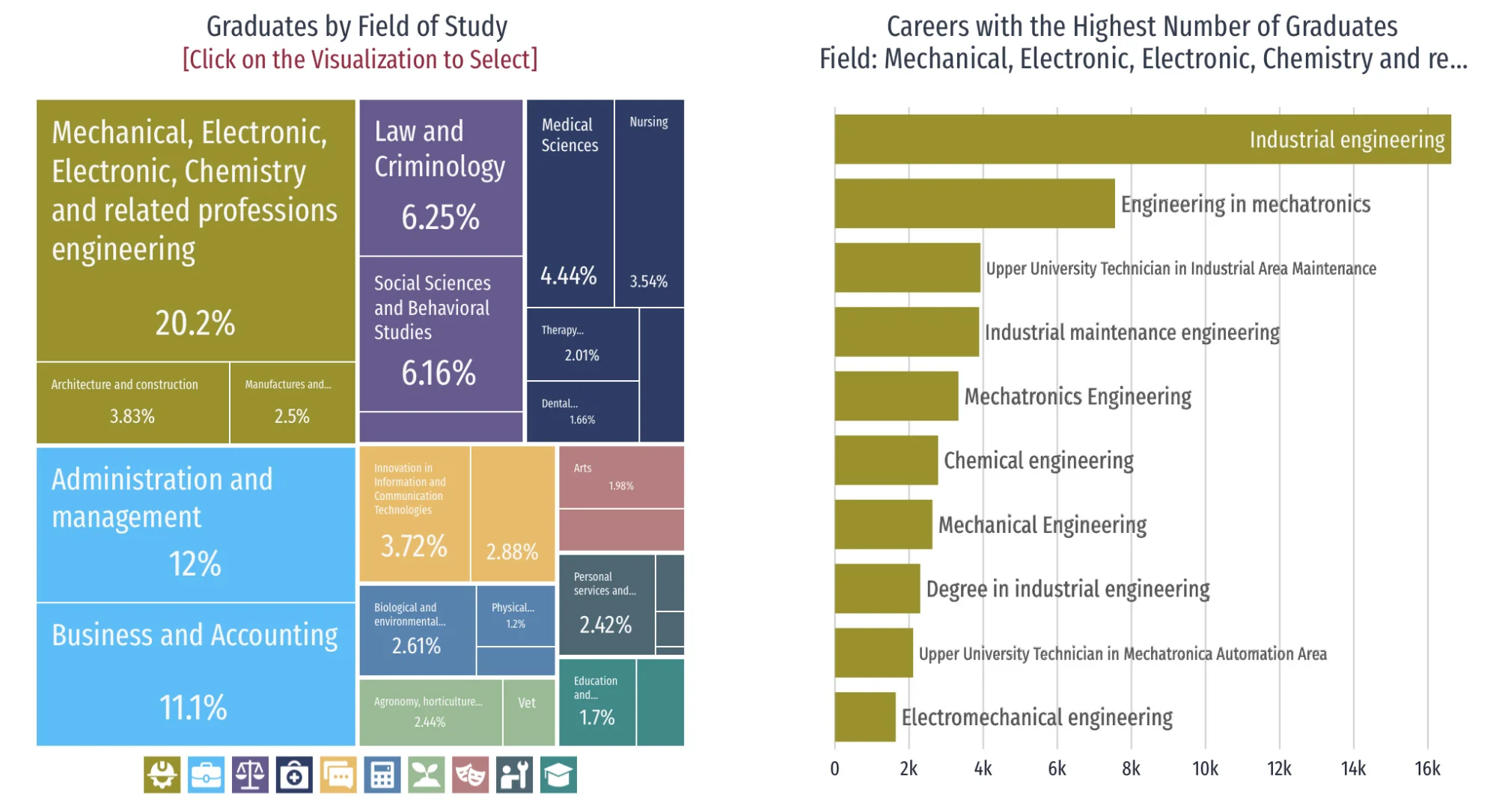Harnessing Complexity: The Path to Mexico's Green-Tech Future
Unlocking Mexico's green-tech future hinges on the transformative potential of industry-academia collaboration.
Opening opportunities for applied research could propel Mexico's untapped potential for building a resilient, green-tech economy. Despite its robust trade policies and a strong Economic Complexity Index (ECI) in trade,Mexico ranks low in ECI Research and ECI Technology, harming green growth. This gap points to a compelling opportunity: fostering university-industry collaboration, a proven strategy to spur the development of green technologies, to build a resilient, inclusive, green economy.
By leveraging the new Multidimensional Economic Complexity Index, a high-resolution analysis of the global economy, we can explore how Mexico, despite its strong ranking (#23) in trade complexity and deep involvement in the value chains of products like cars and computers, falls behind in research (#32) and technology (#68), as reported by a study published in Communications Earth & Environment. This dramatic disparity underscores a crucial opportunity for Mexico to maximize its trade integration with the U.S., particularly in sectors like green technology. The study supports this strategy, finding that countries excelling in trade, research, and technology typically have lower greenhouse gas emissions and more robust economic growth. This correlation suggests that strategic, multifaceted collaboration offers significant potential for green growth.
Chile and South Korea offer examples of how investment in research and technology sectors can spur industries around low-carbon energy technologies. From 1998 to 2021, Chile's research ECI increased from 0.48 to 1.11, with its technology ECI surging from -0.71 to 0.86. This change was partly achieved by launching research projects and pilot programs aimed at pioneering advanced solar technologies, underlining Chile's rise as a global leader in installed solar power capacity. Similarly, South Korea's dedicated investment in R&D, amounting to 4.9% of its GDP, compared to Mexico's 0.54%, has positioned it as a global front-runner in high-tech industries, including electric vehicle batteries and renewable energy technologies. These examples underscore the potential of strategic investment and collaborative efforts between industry and research in driving green growth.
Enhancing collaboration between academia and industry is crucial for developing products vital for combatting climate change. In 2020, public research and development (R&D) funding for clean energy technologies hit a record high of $30 billion globally. Despite this, the IEA acknowledges a shortfall in meeting the necessary funding levels for climate targets, stressing the need for amplified partnerships between academic institutions and industries. Drawing from the experiences of nations like Chile and South Korea and capitalizing on its strong ties with the U.S., Mexico can advance partnerships in green-tech sectors like electric mobility, decentralized energy, and building electrification.
Case Studies of Successful Collaboration:
Mexico has already witnessed successful collaboration between technology and research, which can serve as templates for future initiatives. One notable case is the collaboration between the Center of Semiconductors Technology (CST) at Cinvestav-IPN with local and transnational firms in electronics and software. The CST was created as a joint project of IBM, the Ministry of Economy, and Cinvesta to provide design and development services for digital circuits to the electronics industry in Guadalajara's Metropolitan Area. In addition, the CST serves as a training center, producing skilled engineers who contribute to regional firms and develop new platforms.
An example of the potential for transnational collaboration is the joint project between the Instituto de Energías Renovables (IER) of the National Autonomous University of Mexico (UNAM) and the National Renewable Energy Laboratory (NREL) in the United States. This collaboration focuses on photovoltaic technology, solar-thermal energy, and grid integration. Researchers from both institutions share knowledge, resources, and expertise. However, investors are waiting to see if the current political environment in Mexico will encourage these partnerships or shift priorities.
How to Improve Collaboration Between Research and Technology?
To foster effective collaboration between the technology and research sectors, Mexico's government should prioritize policy frameworks that support such synergies. Additionally, nurturing innovation and entrepreneurship in the education system from an early age could be instrumental. Given that only 9.5% of Mexico's adult population engages in entrepreneurship—compared to South Korea's 34%—there is considerable room for growth. Key complementary strategies include institutional support, interdisciplinary research, and resource provision for state-of-the-art incubators and startup accelerators.
Mexico stands at a pivotal juncture in an emerging green-tech economy. The opportunity is to leverage its robust trade capabilities to foster innovation and growth in green technologies. This shift promises economic diversification and an accelerating transition to a low-carbon economy, meeting climate change commitments while building a more resilient and inclusive future. The potential for transformative change is immense.
Yet, this isn't merely an option— it's a necessity. As the Multidimensional ECI show, the clock is ticking, and delays could cost dearly in terms of missed opportunities and increased environmental risks. Therefore, it's imperative for all stakeholders—government, academia, industry, and investors—to seize this moment, drive change, and set Mexico on a path to sustainable prosperity. The question isn't whether Mexico can afford to do this; it's whether Mexico can afford not to.


